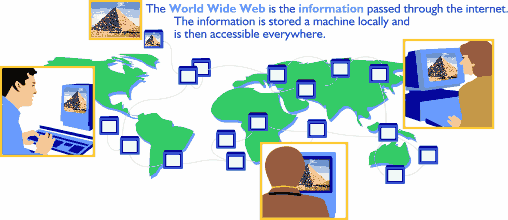The World Wide Web is a collection of documents, multimedia files, and network servers that are linked together by HyperText Markup Language (HTML). A person connected to the Internet can use a Web browser to look at this information, and can access the documents, files, and other services by clicking on the HTML links and buttons provided within the various Web pages. The information is transferred by the use of the HyperText Transfer Protocol (HTTP). (Many of the files are also accessible through other protocols, such as FTP.)
On it's most basic level the Web is a global information database. The guiding principle of the web is universal readership - making information available to anyone at any computer from anywhere in the world.
If you want to learn more about the World Wide Web, we advise you to look around the Web itself
- explore
search engines for a subject of interest
- Read over your favorite sites
- surf around a bit by clicking on different links
- you'll quickly see how the documents are all linked
together
We also greatly respect many of the organizations that contribute to the growth of this dynamic
environment; especially the
World Wide Web Consortium
(W3C); their
History
pages are a great place to start looking for information.

